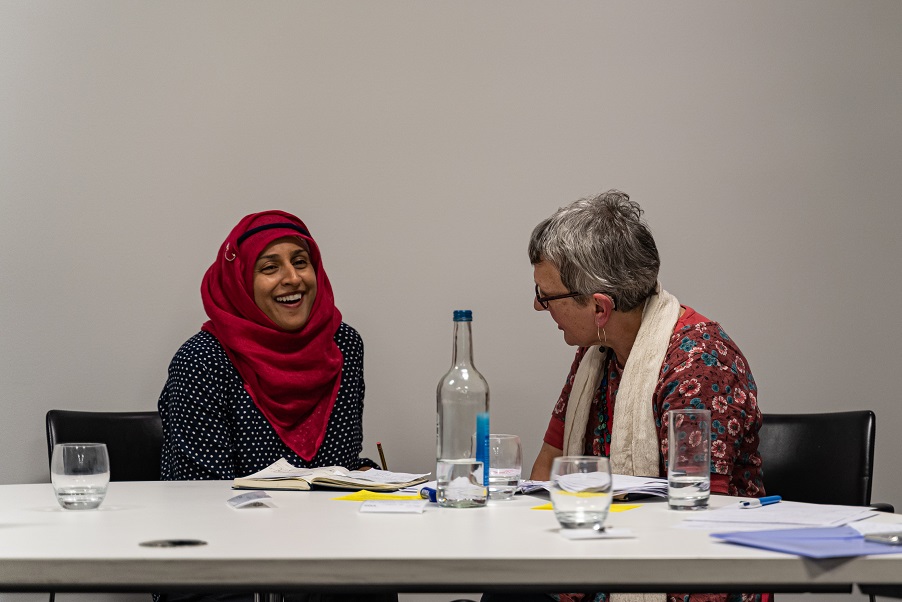What is a charity trustee?
The often unseen volunteers behind charity leadership

A board of trustees is a group of people who together are responsible for the governance, that is, the leadership and oversight, of a charity or non-profit.
Trustees have a legal responsibility to ensure a charity or non-profit is run according to its charitable objectives – what it has set out to achieve – and make sure the strategy and use of resources all work towards those aims. Trustees oversee any risks to the charity, and have a responsibility to ensure the finances are properly managed.
Despite the fact that the role carries a lot of responsibility, and is a crucial one, the majority of trustees are unpaid. They are extraordinary volunteers!
Charity trustee responsibilities
Trustees have six key responsibilities:
- Ensure your charity is carrying out its purposes for the public benefit
- Comply with your charity’s governing document and the law
- Act in your charity’s best interests
- Manage your charity’s resources responsibly
- Act with reasonable care and skill
- Ensure your charity is accountable
- For a detailed breakdown, visit The Charity Commission guidance, CC3a, Charity trustee: What’s involved.
- For charities in Scotland, see guidance and good practice for charity trustees.
- For Northern Ireland see their guide on running your charity – Guide 2 – who are charity trustees and what do they do.
- For trustees in the Republic of Ireland, see their guidance for charity trustees.
Training and support for trustees
We offer essential training for trustees, as well as support and community for both chairs and trustees to help you be the best non-profit leader you can be.

What is the role of a charity trustee?
What the exact role looks like will depend on the organisation and the board.
It is likely that in a small charity, trustees might do more operational tasks, and get involved with the day to day running of the organisation. In a larger charity or non-profit, trustees will probably be less involved in operations and more directly focused on strategy. (Read Joe Saxton’s blog on how boards differ according to charity size).
Here is what a trustee role may include:
Governance
- Attend board meetings and read and digest the board papers, including the financial information.
- Make strategic decisions, with the rest of the board, to ensure that the organisation is working to achieve its aims and objectives.
- Identify and monitor any risks to the charity.
- Have financial oversight, including the financial strategy and accounts, making sure the resources of the charity are being used effectively for its charitable objectives.
- Help to identify, recruit, and induct new board members.
Working with staff / volunteers
- Both support and challenge the CEO and staff to make sure they are carrying out their roles effectively.
- Help with the recruitment and/or induction of the Chief Executive/senior management as required.
Being an ambassador / representative
- Act as an ambassador and champion for your non-profit at events and online.
How long should trustees serve?
While fixed terms for trustees are not legally required, they are generally considered best practice.
Fixed terms help to manage expectations right at the start of a trustee’s journey with your board. They help to avoid the sticky issue of trustees staying too long and refusing to step down. They also make sure the chair and board know when people are likely to leave so recruitment can be planned for.
Many boards have found that long-stay trustees can create barriers to renewal – that is – getting new trustees on board with fresh ideas and perspectives. While we all want a great trustee to stay, it’s not best practice for the governance of the organisation.
The Charity Governance Code recommends that if a trustee has served more than nine years on a board, their reappointment is subject to a rigorous review.
How many trustees should a charity have?
The number of trustees on non-profit boards varies widely from organisation to organisation and there is no legal requirement to have a set number. The number of trustees the organisation should have will be in the governing document.
Some boards have only a handful, others have many more. Boards may also find that they want more trustees but perhaps struggle to recruit them, and have vacancies going unfilled. Ideally you want enough people to allow for diversity of thought and input, and to make decisions collectively as a team.
The Charity Governance Code recommends that a board of at least five and no more than twelve is considered best practice.
Finding trustee vacancies
If you’re interested in looking for a trustee role, there are lots of places to try. We suggest heading over to our Building your Board page, as this contains lots of links to website and organisations that advertise trustee roles.
Training and support for trustees
We offer essential training for trustees, as well as support and community for both chairs and trustees to help you be the best non-profit leader you can be.
